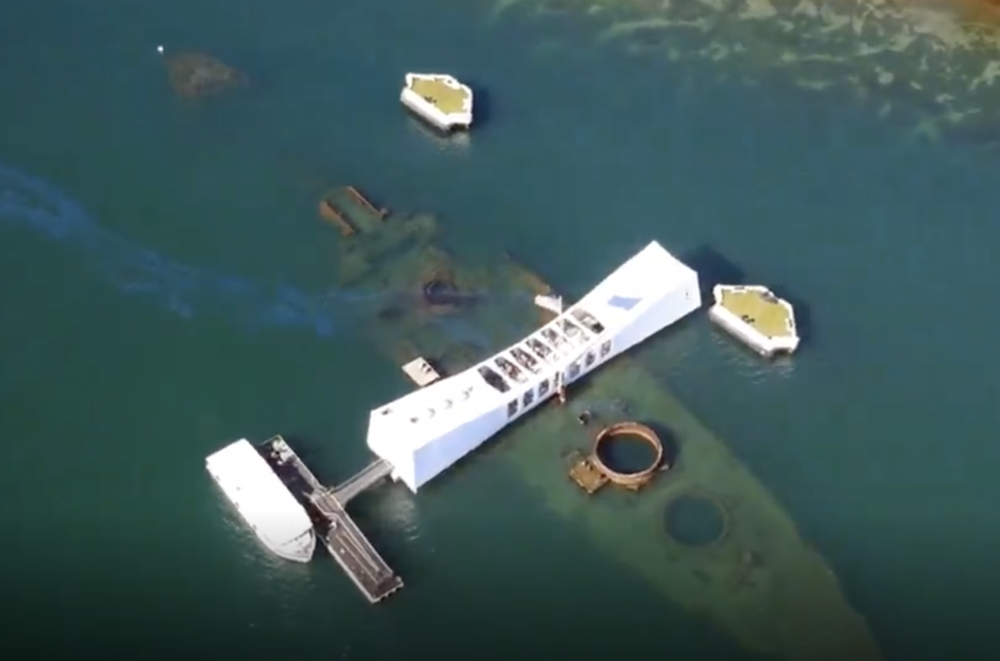
Section Branding
Header Content
Classroom Resources for Pearl Harbor Day
Primary Content
The "day which will live in infamy" is often a time of honoring World War II veterans and considering the sacrifices of the Greatest Generation. But a shift is taking place, mostly because the number of individuals who lived through or served in the Second World War is dwindling. As the dissipation of that living memory may sadden us, we should remember that we are the heirs to a rich legacy of oral history from that era.
The amount of resources for teaching World War II is truly staggering. Additionally, battles, campaigns, leaders, movements, homefronts, etc. can all be explored in great detail. It can all seem somewhat overwhelming for a teacher simply attempting to focus on a standard or two. On top of this dilemma, Pearl Harbor Day is a remembrance of a surprise attack in December, which teachers and students well know keeps everyone's minds on the forthcoming Christmas break. To that end, below we have provided a host of resources to support educators in the exploration of the "day which will live in infamy" along with the United States' subsequent entrance into World War II.

Attacks on American Soil: Pearl Harbor and September 11 | DPLA Primary Source Sets
Grades: 6-12
Help students develop their critical thinking skills by considering the United States' response to two separate tragedies through diverse material from libraries, archives, and museums.
Teaching with Primary Source Inquiry Kits
Grades: 6-12
Using five different primary sources, students can explore Pearl Harbor Day using the archives at the Library of Congress.
Pearl Harbor - Into the Arizona
Grades: 6-12
In this five-part documentary, researchers and divers prepare to explore the USS Arizona.
Pearl Harbor Collection | PBS Hawai'i
Grades: 6-12
The aptly-located PBS station hosted three nights of coverage for Pearl Harbor including eight deifferent explorations.
Pearl Harbor Day and Executive Order 9066 | The Fred T. Korematsu Institute
Grades: 7-9
Learn about the connection between the Japanese surprise attack and the internment of Japanese Americans in response to the United States entering World War II.
Pearl Harbor USS Oklahoma The Final Story
Grades: 7-12
The USS Oklahoma was the only battleship to turn over during the attack on Pearl Harbor, but to this day no one knows why.
FDR and Eleanor Roosevelt Respond to Pearl Harbor
Grades: 6-12
investigate footage from the days after Pearl Harbor when the President and First Lady called the nation to action.
The Enemy Within | Frontline
Grades: 9-12
Students examine the domestic response to the attack on Pearl Harbor and develop a plan on how the U.S. might best respond to terrorism and fears of terrorism with this Teacher's Guide.
Pearl Harbor: The Attack | The War
Grades: 9-12
On December 7, 1941, Daniel Inouye and his family were preparing to go to church when the attack on Pearl Harbor began. The former United States Senator from Hawaii accounts his experiences of that day in this Ken Burns documentary.
America's Entry into World War II | The War
Grades: 9-12
In the six activities contained within this gallery, students will explore the reasons why the United States entered World War II from the Ken Burns documentary.
A Final Struggle Over the Pearl Harbor Attack | NPR
Grades: 9-12
Key events leading up to the attack, interview clips, and additional resources surrounding the attack.
No, FDR Did Not Know the Japanese Were Going to Bomb Pearl Harbor | NPR
Grades: 9-12
Seventy-five years after the Japanese attack on Pearl Harbor, some Americans have never stopped believing that President Franklin Roosevelt let it happen in order to draw the U.S. into World War II.
A Super Carrier is Named After an African-American Sailor | NPR
Grades: 9-12
As Doris Miller's battleship was sinking, the powerfully built boxer helped move his dying captain to better cover, then jumped behind a machine gun and shot at Japanese planes until his ammunition was gone.
At Pearl Harbor, Obama and Japan's Leader Tout Reconciliation | NPR
Grades: 9-12
President Obama and Japanese Minister Shinzo Abe made a historic appearance at Pearl Harbor, 75 years after the surprise attack that prompted U.S. entry into World War II, praising the reconciliation and partnership between their respective nations.
The Legacy of the Man Who Planned Pearl Harbor | NPR
Grades: 9-12
Admiral Isoroku Yamamoto was the chief architect of the Japanese attack on Pearl Harbor 75 years ago. Naval historian Capt. Yukoh Watanabe talks about Adm. Yamamoto's legacy in Japan.
The "day which will live in infamy" is often a time of honoring World War II veterans and considering the sacrifices of the Greatest Generation. But a shift is taking place, mostly because the number of individuals who lived through or served in the Second World War is dwindling.





